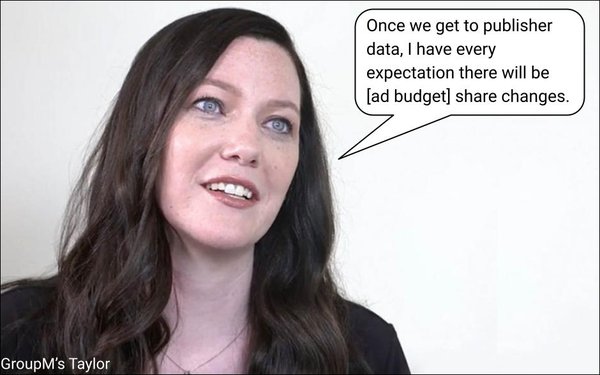
Months after rolling
out a carbon calculator to estimate and influence the carbon impact of digital media buys, GroupM this morning unveiled a new version capable of measuring the carbon footprint of its client's media
buys across various media -- both digital and analog.
The new "Channel-Level Carbon Calculator" was developed in partnership with carbon impact
researcher Scope3, and GroupM currently is working with it to engineer a new media-planning API (applications protocol interface) that any agency or advertiser will be able to integrate into their
media-processing tech stack to seamlessly ingest Scope3's data in order to adjust their media mix or specific suppliers that do a better job of complying with their goals of reducing carbon emissions
in their advertising and media buys.
advertisement
advertisement
While GroupM will have a "first-to-market" access to the API for a period of time, the WPP unit said the plan is for it to be "open source" for the entire
industry to use.
“It’s not exclusive. Nothing is exclusive in the space of saving the planet," explains GroupM and Choreograph Chief Innovation Officer Krystal Olivieri.
"We’re just going to have access first because we are designing it with them.”
That has been a consistent philosophy of GroupM ever since it began developing and socializing its
proprietary framework for achieving a carbon neutral advertising and media-buying marketplace, says Kieley Taylor, global head of partnerships at GroupM, who is helping to lead a broad industry
outreach to standardize the way advertisers, agencies and their media supply chain calculate and adjust for the impact of carbon footprint of various advertising and media buys.
Based on the
new omnichannel carbon calculator's measurement capabilities, GroupM says it will be able to reduce the carbon emissions "per media impression" by 50% by 2030.
Initially, the impact will
be felt at the planning level, Taylor says, but over time it will likely be used to make decisions about the impact of explicit suppliers -- publishers, networks, stations, and other outlets -- in
both digital and analog media channels.
She says it is unlikely that the calculator initially will impact the media mix -- including the allocation of ad budgets to specific media channels --
but that it could "reenergize" the ad industry's philosophical discussions around fundamental media-planning principles like "reach and frequency," because excess frequency is deemed a factor that
contributes to the carbon inefficiency of media options, as well as an advertising-cost inefficiency and a consumer annoyance.
She notes that this corresponds with broader industry goals to
rethink media-planning principles related to tracking and targeting consumers in order to reduce excess frequency and boost the overall reach of advertising.
"As the industry continues to
transition away from cookie-based identity measurement, we get to invent a place that could also be lesser [carbon] emitting and preserve [consumer] privacy in the process," she says.
Rather
than impacting the media-mix allocation of advertising budgets, Taylor says the most likely impact will be on suppliers within media channels and platforms.
"Once we get to publisher data, I
have every expectation there will be [ad budget] share changes," she predicts.
Taylor says GroupM has not yet seen enough of the new omnichannel carbon data to indicate whether one medium
performs better than another in terms of overall carbon impact, but she says the Scope3 analysis factors the entire "cradle to grave" impact including not just the direct energy use of a medium, but
everything that goes into creating it.
She says it is most likely the ad industry will focus mainly on "cradle to gate" factors that influence when an ad is actually seen by a consumer.
In theory, she says, the application of the data in media planning and buying will have a self-fulfilling impact, motivating individual suppliers to reduce their carbon footprint to avoid losing
share of ad budgets to competitors that do a better job of it.